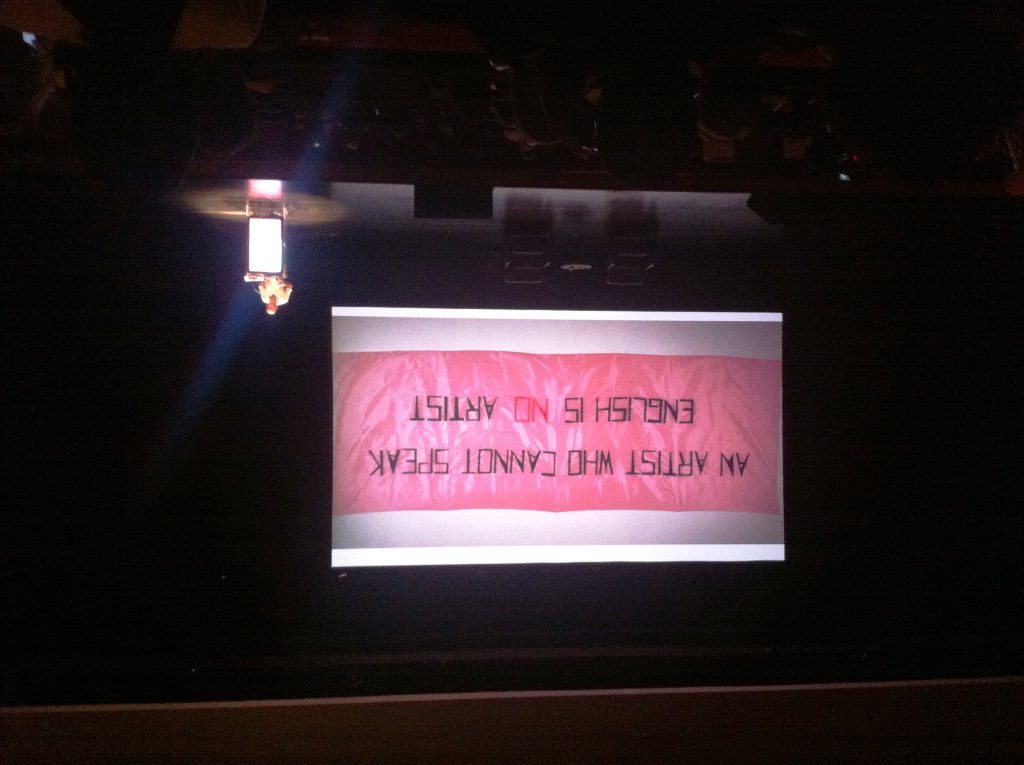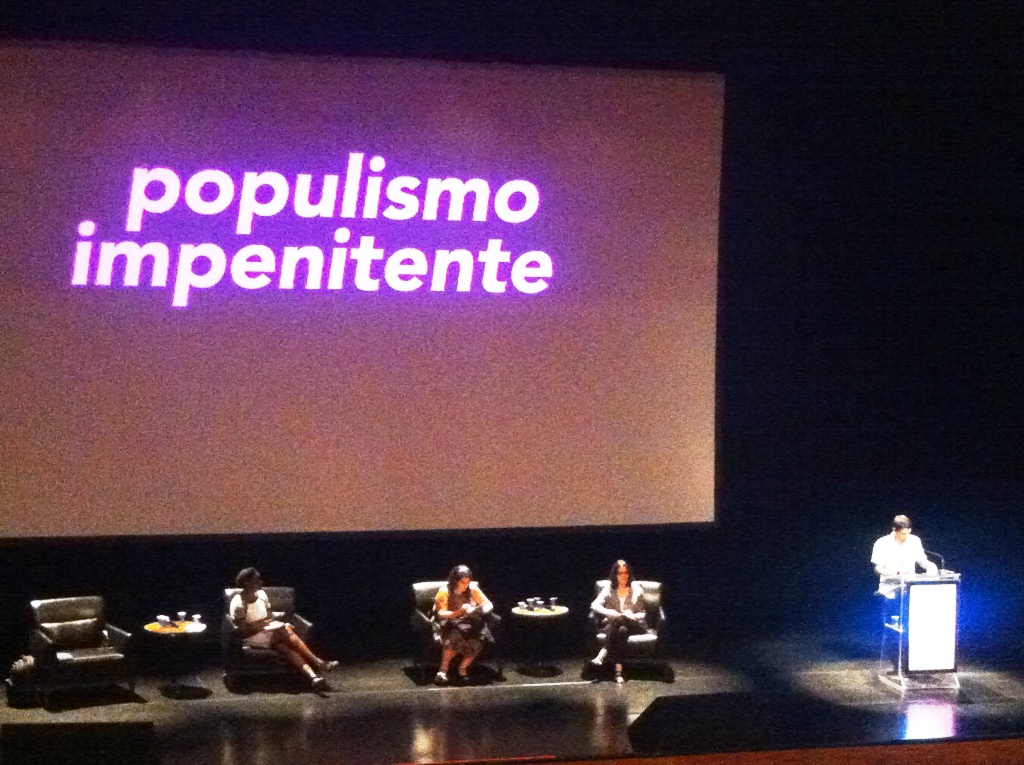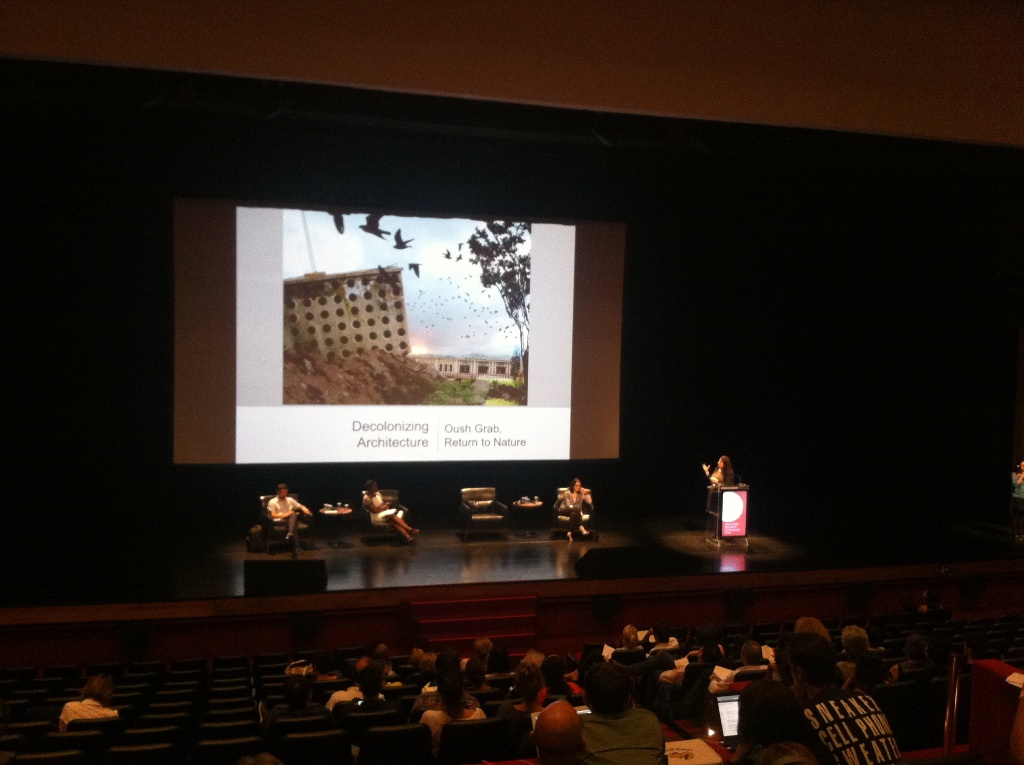
The Biennial as a form of Truce

The second World Forum Biennial took place from november 26 to 30, 2015 in São Paulo, during the final days of the 31th São Paulo Biennial. It was the second edition of an event meant by its organizer – the Biennial Foundation, created in Berlin in 2009 – to “enable biennial practitioners to exchange ideas and experiences about common practices, problems and expertise”.
Ambitiously thus flatly titled “How to make Biennials in Contemporary Times”, this edition was curated by the 31st Sào Paolo biennial curatorial team. Taking place in the impressive Ibirapuera Auditorium (©Niemeyer) and its beautiful Guggenheim-like spiral staircase, the Forum presented a four days program of workshops in the morning and public talks in the afternoons, the first only attended by a handful of international curators brought there for the occasion. Weirdly these “respondents” were not granted any slot of public parole, and one could also regret that so many interesting professionals were flown over at great expense without imagining any way of them interacting more closely with the local professional audience, as does the SITAC in Mexico City for example.
A professional forum is before all the sum of the connections between the people attending it. To this extent, this Forum was like any other: it gathered a broad range of international practitioners willing to engage with shared preoccupations, happy to find themselves away from their usual activities and to enjoy the first days of summer of the southern hemisphere (the majority of them coming from the wintercold other side of the globe). The usual entanglements generated by the format itself of the symposium were of course present: naturally gifted, passionate speakers officiated, as well as lazy or overconfident orators that brought the audience to awe or…sleep, despite the undeniable individual quality of all participants and moderators. A professional forum is like a Biennial: you can try to challenge its format or simply go with the rules. Ironically, the format of the Forum didn’t aim to question itself on a meta level: it’s self-reflexive ambition simply stopped at its title.
To delve a little bit further into content: a jet-lagged Peter Osborne uttered an introductory talk that casted a gloomy veil on the upcoming conversations, affirming the deeply unoriginality and eurocentricity of the very biennial endeavor, trapped in post-modernity and the impossibility to understand globalization further than the mere disappearance of local cultures. Ugh. The next days hopefully contradicted him: thus the Brazilian Fabio Cypriano and Fernando Oliva, gave a very welcome reminder that the São Paulo Biennial is indeed the second oldest biennial after Venice as it was created in 1951. Its outstanding archive conserved by the São Paulo Biennial Foundation informs about Brazilian contemporary art and the numerous ties it maintained with other international art movements throughout the years, therefore baffling all preconceived ideas of many attendees, but also speakers as some admitted to me later.
Later that afternoon, Anne Szefer-Karlsen created a parallel between the Lofoten Art Festival in Norway and the Benin Biennial, that proved extremely relevant and actually shifted many perspectives about notions of center and periphery, in a visually generous and modestly committed manner.

I enjoyed very much Manuela Moscoso talk about Love and Curating, coining terms such as “necessity” and “contingency”. Reem Fadda questioned the importance of art making in the current Palestinian context, by suggesting the “decolonization of art” both from a commodity and ideology point of view. Most expected speaker Marina Fokidis, editor of South Magazine, director of Kunsthalle Athena and co-curator of the next Documenta with Adam Szymczyk, took the audience by surprise with a patronizing speech about art, structure, politics, economy, resistance, activism and commerce, not even realizing the ambiguity of her position within the power games and conflicts of interests the intertwining of her various activities explicitly revealed.

The concept of South was all the time mentioned but never really debated. The notion of audience was seldom discussed in terms of social backgrounds, race or gender, as if this audience was a monolith, and the same in Berlin as in Bahia or Jakarta. It was finally evoked in the final talk by Brazilian philosopher Cayo Honorato: how articulate a truly ambitious artistic and curatorial program while accepting the idea of sustaining a direct relationship and a creative process with the audience, any audience? The necessity to embrace the educational aspect of the Biennial format as an aesthetic display in itself appears as an ineluctable development in the Biennial history, possibly offering a historical chance to create collective and critical thinking within the Institution.

World Biennial Forum No 2
How to Make Biennials in Contemporary Times
26-30 November
São Paulo
Dorothée Dupuis


